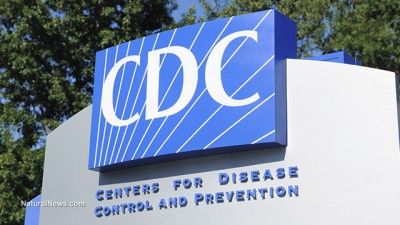CDC Admits that It Miscalculated the Risk of Outdoor COVID Transmission

All Global Research articles can be read in 51 languages by activating the “Translate Website” drop down menu on the top banner of our home page (Desktop version).
Visit and follow us on Instagram at @crg_globalresearch.
***
The New York Times is reporting that the Centers for Disease Control and Prevention was relying on a faulty study in declaring a 10 percent chance of the transmission of Covid-19 outdoors. After using the “miscalculation” to support outdoor mask mandates for over 300 million Americans, the CDC now says that it is more like one percent. It is astonishing that such a key and controversial component of our Covid policies was not just based on a miscalculation but never actively questioned or reexamined to discover the error.
“There is not a single documented Covid infection anywhere in the world from casual outdoor interactions, such as walking past someone on a street or eating at a nearby table.”
The outdoor risk has been a major source of disagreement with many contesting mandatory mask rules for those walking or working or recreating outside. It turns out that, according to the Times, the 10% benchmark is based “partly on a misclassification” of virus transmission in Singapore at various construction sites. Those sites were incorrectly described as outdoor but now appear to have actually taken place in indoor settings. Singapore also classified settings that were a mix of indoors and outdoors as outdoors, including construction building sites.
The real risk is one percent or less. Yet, cities like Chicago closed whole parks — magnifying the isolation and depression for citizens. Various cities like New York closed playgrounds despite being outdoors and used by the lowest risk population for Covid. States closed parks and trails that could have been key areas of release for people during lock downs. When Washington, D.C., issued its mandatory outdoor mask in July 2020, the city stressed:
Dr. Robert Redfield, the Director of the Centers for Disease Control and Prevention, Dr. Anthony Fauci, Director of the National Institute of Allergy and Infectious Diseases, the World Health Organization, and the District of Columbia Department of Health are all agreed that wearing masks when social distancing is impossible to maintain can reduce the spread of the disease dramatically.
We spent trillions on this pandemic and the issue of masks and curtailing outside movements was continually in the news. Yet, there appears to have been little time or money spent on the basis for this key component of the mandatory policies supported by the CDC and mandated by many states.
I can understand the reliance on an article in the prestigious Journal of Infectious Diseases. I cannot understand the failure to closely examine its basis since it appears to have been the primary basis for the policy. Hundreds of millions of Americans were impacted as well as the economy. Yet, CDC is only now noting that the article appears to have been fundamentally flawed in its underlying assumptions and calculations.
*
Note to readers: Please click the share buttons above or below. Follow us on Instagram, @crg_globalresearch. Forward this article to your email lists. Crosspost on your blog site, internet forums. etc.

